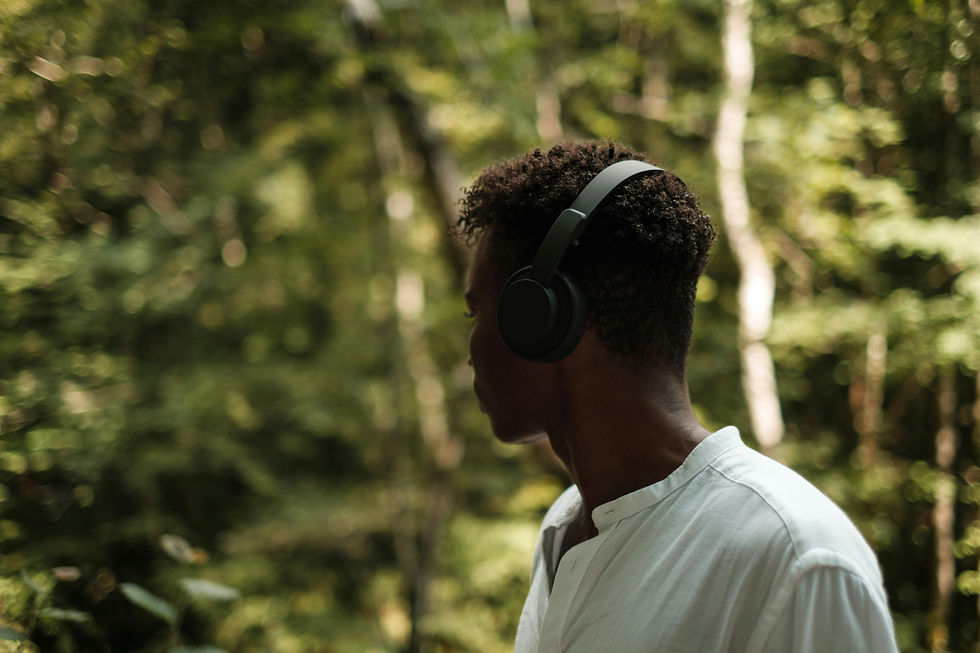SoundSpace Deep Dive: Sound + Music Wellness for Creators
- Tyler Scott
- Apr 11, 2022
- 4 min read

Image from iStock Photo
The life of a creator can be incredibly strenuous and taxing on the mind, body, and spirit. From late nights in the studio, traveling between time zones, disrupted sleep patterns, and more, the importance of having tools for health + wellness is an important preventative practice. A recent Project Immersed panel titled SoundSpace Explorations, featured artists who either directly experienced or witnessed fellow artists experiencing burnout. These experiences led them into new positions of service, using their love for music to bring awareness to how music and sound can be used for wellness. In this article we will take a deep dive into a few of the tools discussed and provide information as to how you can adopt some of these for your wellness practice.
Sound Healing Fundamentals
According to a journal article from Wholistic Healing Publications, “sound healing is the therapeutic application of sound frequencies to the body/mind of people with the intention of bringing them into a state of harmony and health” (Simon Heather, M.Soc.Sc., I.A.S.T., Lic.Ac., M.C.O.H.,). Sound healing is one of the oldest healing practices known to humanity and involves a number of techniques to facilitate wellness. Lavender Suarez, Sound Healing Practitioner / Artist / Educator, explained that sound healing is not a one size fits all type of therapy. It is a deeply personal process and requires that the practitioner develop a clear understanding of the mental, physical, and emotional needs of the patient to then create a personalized concert or sonic journey to help bring them into a state of wellness.
Sound healing is based on the understanding of vibration and resonance. Quantum physics has proven that everything in existence is in a state of vibration. Everything has its own vibratory rate and thus its own resonant frequency. Every cell and organ of the human body has its own vibratory rate and unique resonant frequency. Illness and disease take these frequencies out of tune. Sound can be used to help bring them back into balance.
“In air sound travels at 340 meters per second (760 miles per hour). In water sound travels at 1,500 meters per second (3,350 miles per hour). In glass sound travels at 5,600 meters per second (12,500 miles per hour). The human body is made up of 70% water; this makes it a very good conductor of sound.” (Simon Heather, M.Soc.Sc., I.A.S.T., Lic.Ac., M.C.O.H.,)
Sound healing can be transmitted in a number of ways including the use of rhythm, chanting, the human voice, or the use of sound healing instruments. It is important to note that it is not the sound that actually heals the body. The sound is used as a guide to bring the body into a particular state where it can begin to heal itself. Many modern sound healing sessions involve the use of gongs, singing bowls, drumming, chanting, and other forms of vocal toning.
For those interested in turning to sound healing for wellness, here are some places to start:
Attend a sound bath
Attend a drum circle
Schedule a personal sound healing session
Rhythm + Entrainment
The principle of entrainment states “that whenever two or more oscillators in the same field are pulsing at nearly the same rate, they tend to lock in and begin pulsing at exactly the same rate. The powerful rhythmic vibrations from one source will cause less powerful vibrations of another source to lock into the vibration of the first source”.
Pulsation and rhythm are an intrinsic part of the human experience. From the time we are developed in our mother’s womb, we are introduced to rhythm through the sound and feeling of our mother’s heartbeat. We have explored in previous articles the neuroscience of sound and how the brain essentially functions on rhythm. Rhythm and entrainment go hand in hand, as entrainment occurs when our brainwaves begin to synchronize to an external stimulus. Matias Kamelman, Founder/ Practitioner of the Conscious Listening Method, provided a great example of this in pointing out that when we are listening to music, our pulse begins to synchronize with the bpm of the music we are listening to. Entrainment can be used for a number of purposes including helping to regulate our heart rate, blood pressure, and even helping to calm the nervous system so that we may enter into a state of rest. More on entrainment from the Project Immersed panel below:
Sound + sleep
Sleep is the foundational pillar of human health. Award Winning Composer and Wellness Pioneer, Tom Middleton explained how his experience of sleep disruption and tour burnout led him to study the importance of sleep for overall wellbeing. He now creates music to help prepare people for a good night's sleep, gently influencing them on a subtle level through techniques such as the one explained above, rhythmic entrainment. Hear more from Tom on how these tools can influence our body mind and spirit to help us get the rest needed to maintain a state of overall health.
If you are interested in the techniques explained above to promote a good night's rest, check out Tom's Spatial Sleep Music album released earlier this year.
Catch the next discussion from Project Immersed, Digital Music Therapy, airing Thursday April 21st!
Sources:
Do you use the power of sound to cultivate a state of wellness? Let us know @healthandbass :)
.png)




Comments